Reclaiming Our Cities From the Edge of Chaos
A Dharmic Vision for Urban Transformation
Cities are living, breathing organisms. They pulse with life through their green spaces, flow through their water bodies, and hum with the stories of their people. Yet, over decades of rapid urbanization, this harmony has been lost. Greenery has given way to concrete, air has turned heavy with pollution, and the cultural soul of our cities has been diluted.
But this is not irreversible. Cities can be reclaimed—not just as places to live, but as spaces that inspire, nurture, and connect us to nature and each other. To achieve this, we need a Dharmic approach—one that emphasizes balance, respect for natural and cultural systems, and the collective responsibility of all citizens.
This article presents a roadmap to transform cities into vibrant ecosystems where nature, culture, and humanity thrive together.
1. Policies That Set the Foundation for Harmony
Urban transformation begins with bold policies rooted in sustainability, equity, and long-term thinking.
Green Spaces are mandatory – cannot be optional!
Green spaces are not luxuries—they are essential lifelines for any city. Policies must mandate that a significant portion of urban land is reserved for parks, forests, and gardens. These spaces should be accessible to all, improving air quality, promoting physical and mental well-being, and fostering a sense of community.
We need beautiful water bodies in addition to green spaces!
Neglected lakes, ponds, and wetlands must be revived—not just as functional water reserves but as vibrant ecological and social hubs. These water bodies cool cities, support biodiversity, and provide spaces for reflection and recreation.
Tree Planting Should be Done Strategically and Scientifically
Planting trees isn’t just about numbers; it’s about understanding. Indigenous species like Peepal, Banyan, Amla, and Ashoka are not only culturally significant but also critical for improving air quality and supporting local ecosystems.

Quiet Zones and No-Vehicle Days

Noise pollution disrupts not only our mental well-being but also the delicate balance of urban ecology. Designate quiet zones where noise is strictly regulated. Introduce no-vehicle hours every week and vehicle-free days every month to reclaim peace and reduce emissions.
Temples are energy vortexes (not just places of prayer and worship) that are vital for metal health of citizens
In the Indian tradition, temples are more than places of worship—they are centers of positive energy. Strategically locating temples near green spaces and water bodies can amplify their impact, creating sanctuaries for spiritual renewal and community gathering.
Stop looking at Sanatani temples as religious structures. These are energy vortexes that enhance the positive energy in and around where they are located. These should be strategically built all over the city adjacent to green areas and water bodies.
Design Should Blend Aesthetics with Functionality
Indian aesthetics emphasize harmony and meaning. Public spaces and buildings should reflect this ethos. Murals, carvings, and thoughtful architectural designs can tell a city’s stories while serving practical purposes. This is how we weave beauty into the fabric of everyday life.
2. Builders Should be Seen as Custodians of the Future – but they need education.
Builders and developers shape the physical identity of our cities. They must see themselves as custodians of harmony, responsible for designing spaces that honor nature, culture, and inclusivity.
Eco-Friendly Design Principles – through education, policy and inspiration
Incorporate green roofs, vertical gardens, natural ventilation, and sustainable materials into all urban developments. These aren’t just trends; they are necessities.
Water Conservation Should be incorporated in Every Project
Rainwater harvesting, greywater recycling, and artificial wetlands should be standard features in every building plan. These systems are critical for cities grappling with water scarcity and urban flooding.
How can we Design for Everyone
- Provide public exercise areas, walking areas and cycling areas spread all over the city based on a certain density ratio that helps to cover th max number of people.
- Have certain walking only and walking + bicycling only areas throughout the city.
- Install meditation pyramids in all the green spaces and near water bodies. People should be Able to use these pyramids for a small fee to meditate and recharge anytime anywhere.
- Make these green spaces digital detox zones during 3 specific periods throughout the day. Let these times be the busiest times of the day.
- Make it possible to carry bicycles on metros and buses.
- Develop and implement a scientific tree planting strategy – particularly Peepal, Belpatra, Bad, Amla, and Ashoka trees.
- Incorporate: total quiet hours (1 hour of total silence) once a week and one day of total silence (8 hrs) once a month.
- Have at least 1 hr of zero vehicular traffic period per week and 1 day of no vehicles on the street per month.
- Every 3 months, every city would completely shut down (except for emergency services) for 24 hrs.
- Every locality should have a local cleanliness, culture and environment group or committee – organise clean your streets campaigns once a month.
- Include small but impactful libraries inside the temples and green spaces. Every city should have a library and bookstore on the wheels. Both types of libraries would contain curated books that help people understand the history of their towns and cities in various languages. Include a language and cultural enrichment centers at green areas, temples and libraries to help non-locals and immigrants learn local languages, culture and get guidance in terms of the cultural map of each town and city. Include murals, paintings, posters, pictures etc that tell beautiful stories of the history, culture and traditions of our towns, cities and states to keep them high up in public consciousness
- Offer a one day free open top bus tour of the city once a month.
- Measure and publish certain types of data about each area of the city and work with the local councils to manage those numbers: Air pollution, water pollution, sound pollution, cellular radiation etc. Build a suitable number of herb gardens/ medicinal forests for each city. Do some research to identify: how many trees of each type (and how many types are key and critical for the health of the city) should be available and in what density in each city to ensure a certain air quality level. I will come back with more such ideas in the next article.
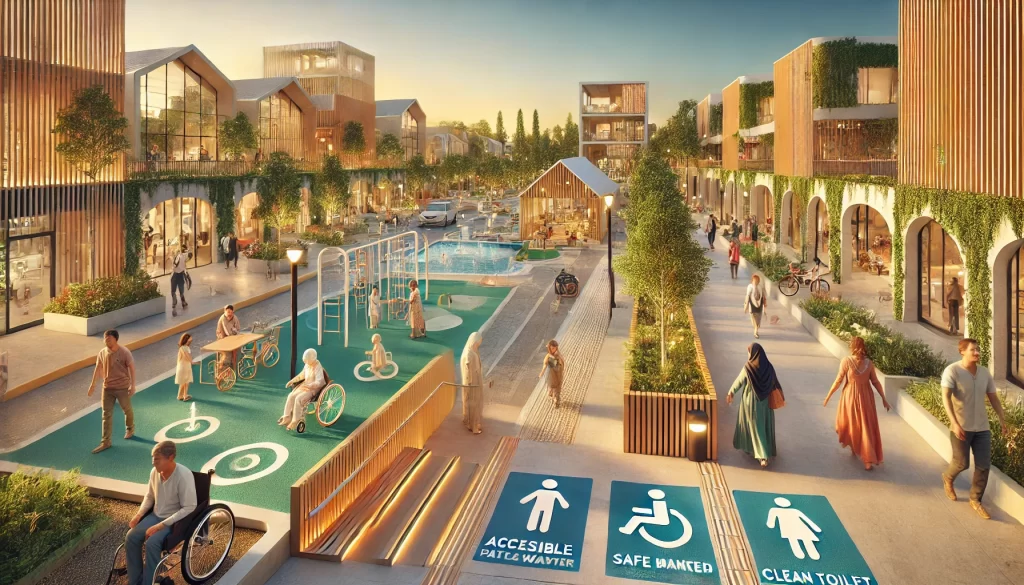
Architecture must reflect inclusivity by addressing the needs of:
• The Elderly: Accessible walkways, benches, and safe public spaces.
• Differently Abled Individuals: Barrier-free access, tactile pathways, and clear signage.
• Children: Safe play zones and creative learning environments.
• Women: Well-lit public spaces, clean toilets, and access to safe drinking water.
Gardens in Every Home
Every home can contribute to the city’s greenery. A balcony garden, a rooftop patch, or even a small planter box can collectively add up to a significant impact.
3. Education for Builders and Architects
Builders and architects must go beyond functional design to create spaces that reflect respect for nature and culture.
Training in Dharmic Architecture
Introduce builders to the principles of vastu shastra and other traditional Indian architectural practices that align structures with natural energy flows.
Workshops on Sustainable Practices
Regular workshops can equip builders with practical knowledge about eco-friendly materials, energy-efficient designs, and waste reduction strategies.
Creativity Through Contemplation
Encourage architects to engage in practices like meditation and reflection. Deep contemplation often leads to inspired designs that resonate with both people and the environment.
4. Establishing a Wise City Council
Urban governance must move beyond bureaucratic efficiency to reflect wisdom, integrity, and a deep connection with the city’s needs.
- Create a “Wise City Council” made up of educated, informed, rooted, connected long term residents of the city who have history in the place and care about what happens to the city. (Also, just like we have Home Owner’s Associations, there should be some city association separate from the Municipality that has a significant say in everything to do with the city. It should have a culture committee and many other such committees for planned growth while retaining the city characteristics and history/culture etc.) This should include architects who are knowledgeable in Indian architecture, ecofriendly architecture, eco friendly materials and also have first hand experience and knowledge of how nature works.
- Dharmic architecture and dharmic design would ensure harmony between human structures and activity and natural cycles and processes. This is very important. To achieve one would need deep sadhana. Without such a deep understanding architects will do copycat designs or designs that create friction and conflict between man and nature.
- Some other key ideas: Spread gardens, green lung spaces and water bodies throughout the city ensuring all the citizens have easy access to greenery and water. Revive dead or neglected lakes and ponds. Let every house have a small garden however small.

A Council of Rooted Experts
The council should include long-term residents, environmental scientists, urban planners, and architects with a strong understanding of the city’s cultural and ecological fabric.
Cultural Committees
Form subcommittees to preserve local traditions, languages, and arts. These committees ensure that modernization does not erase a city’s cultural identity.
Public Dashboards for Accountability – corporations, institutions, other commercial entities, universities, hospitals etc.
Introduce a public dashboard that tracks:
• Contributions to pollution and ecological degradation.
• Efforts to improve the city’s environment, culture, and livability.
Display this data at key locations such as airports, train stations, and public squares. Transparency fosters accountability and citizen engagement.
Corporate Town Halls
Empower the citizens’ councils to summon corporate leaders to town halls. These sessions would require them to explain their contributions to:
• Environmental sustainability.
• Cultural preservation.
• Community welfare and inclusivity.
5. Engaging Communities for Collective Action
The heart of any city lies in its people. Transformation is impossible without their active participation.
Quarterly “Let Us Make Our City Better” Challenges
Host contests in schools, colleges, and corporate offices to encourage innovative solutions for urban problems. These ideas can then be presented to local leaders, policymakers, and even the PMO, fostering a movement of citizen-driven change.
Monthly Cleanliness Drives
Organize neighborhood campaigns to clean streets, plant trees, and beautify public spaces. These initiatives build a sense of pride and ownership among residents.
Libraries and Cultural Centers
Set up libraries in parks, temples, and community hubs to preserve and promote local heritage. Mobile libraries can ensure accessibility to knowledge in underserved areas.
6. Transparency, Accountability, and Predictive Planning
Cities need tools that evaluate progress, hold stakeholders accountable, and anticipate future needs.
Predictive Models for Urban Needs
Develop a predictive model to calculate the ideal number of:
• Trees, green spaces, and water bodies.
• Meditation pyramids and spiritual hubs.
• Quiet zones and vehicle-free areas.
• Trash cans, libraries, and community meeting spaces.
This model can guide policymakers to meet the ecological and cultural requirements of every X number of residents.
Regular Environmental Reporting
Measure and publish data on air quality, water quality, biodiversity, and green cover. Making this information widely accessible fosters collective accountability.
Quarterly City-Wide Reflection Days
Designate rest days for cities, pausing non-essential activities to allow ecosystems to recover and citizens to reflect on their shared progress.
7. Centers for Local Research and Policy Input
Every city needs a Center for Urban Ecology and Culture to study its unique geography, topography, materials, flora, fauna, and cultural history. These centers can:
• Provide valuable data and recommendations to policymakers.
• Guide architects and urban planners in designing sustainable, context-sensitive spaces.
• Educate citizens about their city’s natural and cultural wealth, fostering pride and stewardship.
A Vision for the Future
Imagine a city where green spaces breathe life into neighborhoods, water bodies teem with biodiversity, and public art narrates stories of resilience and creativity. A city where temples serve as sanctuaries of energy, libraries preserve culture, and citizens actively participate in shaping their environment.
This is not a far-off dream. It is an achievable reality—one that begins with us. By embracing a Dharmic approach to urban development, we can create cities that are not just livable but deeply inspiring. Let us come together to reclaim our cities for ourselves and generations to come. The time to act is now.




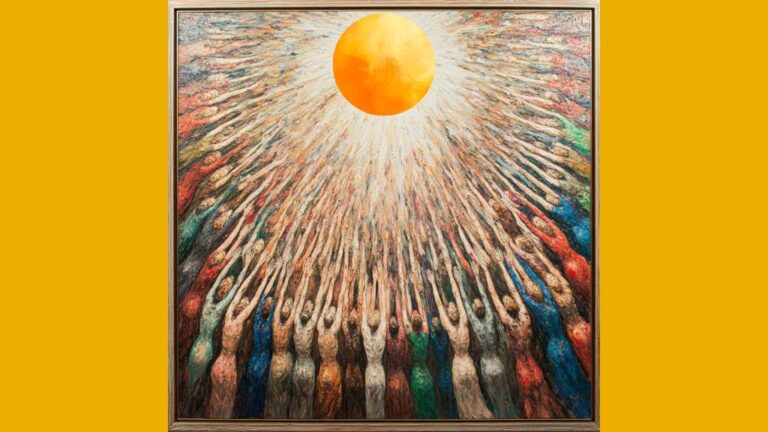

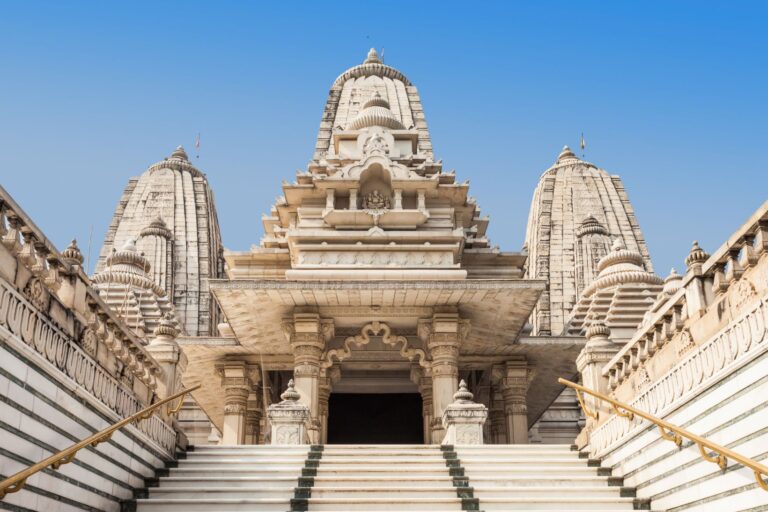
Элитные коллекции мебели для истинных ценителей.
Мебель премиум-класса [url=https://www.byfurniture.by]https://www.byfurniture.by[/url] .
nf6j1p